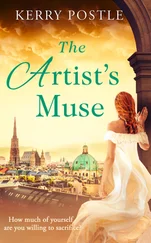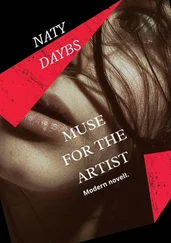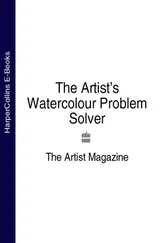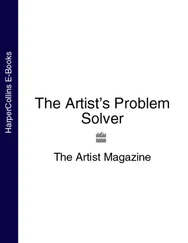“What do you want to do with it?”
was his first question. I buried my face in my hands in an attempt not to strangle him. He laughed and said my reaction was completely normal. Then he did something... something the salesmen hadn't done. He asked me a lot of other questions, like: “Are you only going to take holiday shots? Quick and decent-looking? Or do you want to get started like a professional filmmaker? With nice tracking shots, good sound and all that other knick-knacks?”
I couldn't keep my mouth closed. My friend and neighbour had completely understood what I wanted. He smiled and confessed to me that he was facing the exact same problem. So first he informed himself thoroughly and figured out what he wanted to do with the camera. This required an exclusion criterion that included many steps. After that I also sat down, first of all I gathered information about companies and models. I quickly found a magazine that dealt with the latest camcorders in my price range. At the same time, I realized which factors were decisive for my purchase. An external connection for the microphone, a connection for the headphones and a brilliant image stabilizer were essential. Several books about professional filming came into my hands and confirmed the knowledge I had acquired so far. At that time, I decided to buy the Panasonic HDC-SD 909, even though it was only second place among the test winners. Now you're probably wondering why I chose the second best camcorder. It's quite simple. The Canon that was considered the test winner did not meet my requirements. It was too overloaded, didn't look very good and was also two hundred Euro more expensive than my chosen model. Resolution and recording quality were identical. Happy and satisfied, I learned to use my working tool and quickly reached my limits. The symbols and signs the camcorder revealed to me didn't make any sense to me. Thus began a lengthy learning process that brought me closer to the camcorder and its handling step by step. The additional purchases of a bag, tripod, pan head, slider rail, editing program and much more slowly but surely exceeded my budget. In short, it took me almost a year until I mastered my camcorder and the equipment. Another half year went by until I managed to get the optimal picture layout and relatively professional rides. Not to mention the video editing and the publishing formats. Even today I learn something new with every shot. The effort was worth it, I think. Even though I haven't made a real film yet, which is yet to come.
Through my acquired knowledge I enjoy a status among friends, professional photographers and amateur film makers, who call me an expert. A nice feeling, even if it is not completely true. The other day a family member approached me.
“You know about camcorders. I'm thinking of getting one and hope you can advise me. The best there is, at the best price.”
After spending some time laughing, I asked,
“What do you wanna do with that?”
I hope the gist of my little story hasn't faded too much. You have to find for yourself or perhaps with the help of a semi-professional or full professional the tattoo machine that suits you and your needs. Thanks to the Internet, this is done quite quickly these days. At least in theory. Of course, all vendors praise their machines as the highlight and revolution of the century. Just visit a tattoo convention and ask the tattoo artists working there about their machines and why they use them. Don't worry, some are very sociable and helpful. If not, on to the next one. Practically every high quality tattoo machine from about three hundred Euro is suitable to do a good job. For outlines, as well as for colors and shades. Nevertheless, it depends on the tattoo artist himself. As often mentioned, the best and most expensive machine is of no use to you if it runs at the wrong speed, the colors are bad or the artist simply isn’t good. The best camcorder is of no use to you if you don’t know how to operate it.
Which criteria are important?
When choosing your tattoo machine, you should consider the following criteria. If you have only one machine, with traditional needles soldered on a bar, you have to change it after the contours are inked. Just like your handle. If you have forgotten something about the contours, you have to change them back again. If your stroke is too large or too small, you have to change it again. More on this in a moment. It's easier with a pen that works exclusively with modules. Modules are nothing more than needles that have been incorporated into a fixed tip. These are available in all common sizes and shapes. They can be changed very quickly and as often as desired, which saves a lot of time. Throw it away after use and you’re good to go. Actually the optimal way of working. There are also attachments for coil and rotary machines, with which you can use the common modules. They cost a lot, but you can use your machines to their full potential. Mostly this purchase is more worthwhile than a new tattoo machine.
I tend more and more to a good pen that only costs a measly six hundred Euro. That sounds like a lot of money, especially when you're just starting out, but the time management and results speak for themselves.
Now we’re going to talk about Hub, which should not be confused with Stroke. These terms refer to the depth of stroke that this machine performs. Bullshit, you’re going to think. If I let the needles stick out, I'll ink deeper. No, that has nothing to do with the stroke, which is too often ignored. Every tattoo machine you find on a seller’s website should have a stroke in millimeters: 3 mm, 3.2 mm, 3.5 mm, 4 mm or more. As a rule of thumb:
“The higher the stroke, the richer the result.”
This is especially important for outlines, your contours. Of course, the body part of the subject is crucial. Motifs on the shoulder blade, upper arm or calf are much easier to ink. The skin is simply tighter in these areas and therefore easier to work on. Here a stroke of 3.5 mm or even 3 mm is completely sufficient in terms of contours, color and shading. The situation is different with softer parts of the body, such as belly, hips or thighs. Have you ever noticed how many people, especially young girls, have butchered motifs on their ribs? Apart from the fact that it is one of the most painful places to get a tattoo, it is also one of the most difficult. This is exactly where the professional differs from the beginner. The professional tattoo artist tattoos on the hips or ribs with a high stroke. 4 millimetres or even more. Black or color are inked with a stroke of at least 4mm. Only shades can be inked with a smaller stroke, because they don’t need to go so deep into the skin. Likewise, the professional knows that it takes twice as much time on this part of the body, while the layman wonders why he’s got such a hard time getting the color into the skin. Then the machine is cursed, tinkered with, the problem is shifted onto the customer's bad skin and finally the motif is messed up. Of course, you can also use a smaller stroke in extreme places, but this will triple or even quadruple the time, because you just have to work slowly. Not to forget the pain factor of the customer. We remember:
“Soft body parts are not a good start for an untrained tattoo artist. The higher the stroke, the richer the colors in it and the faster you can work”.
A smaller stroke, around 3mm or less is better for shading because the needles don't go so deep into the skin. Shading is more like gliding over the skin. Now all you have to do is watch the speed of your machine and adjust it to the situation.
Maybe now you understand why I own two tattoo machines. The Rotary has a 4 mm stroke, which I don’t change. I use this one for outlines and black areas, so that they are nice and rich. My pen, with a 3.5 mm stroke, I use for colored areas, shades and also for black areas, if the body part allows it.
Читать дальше











